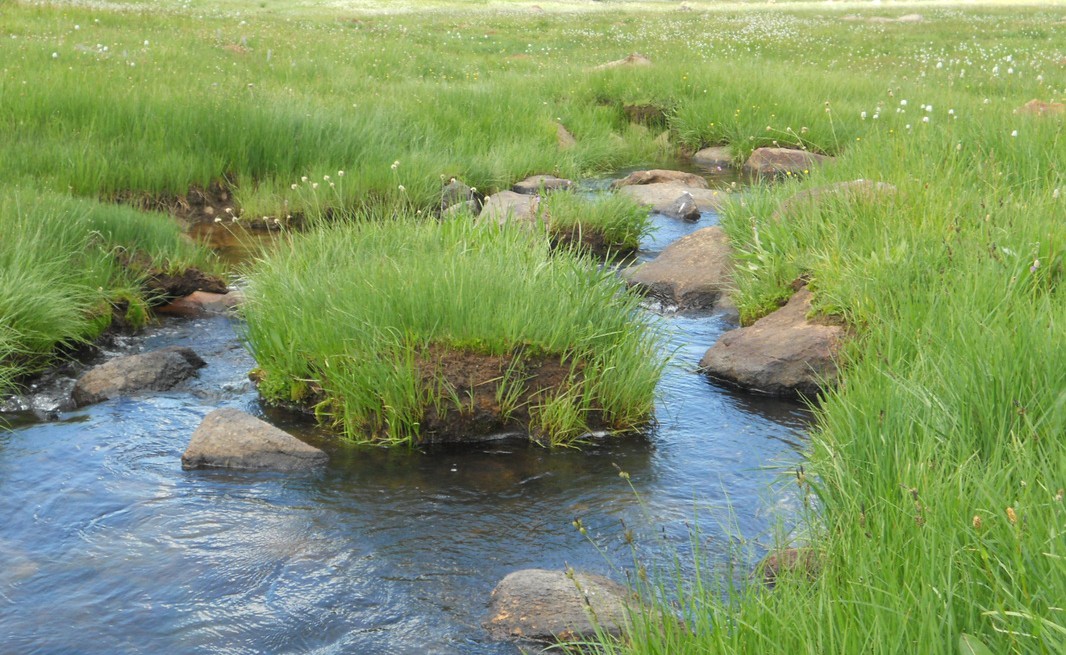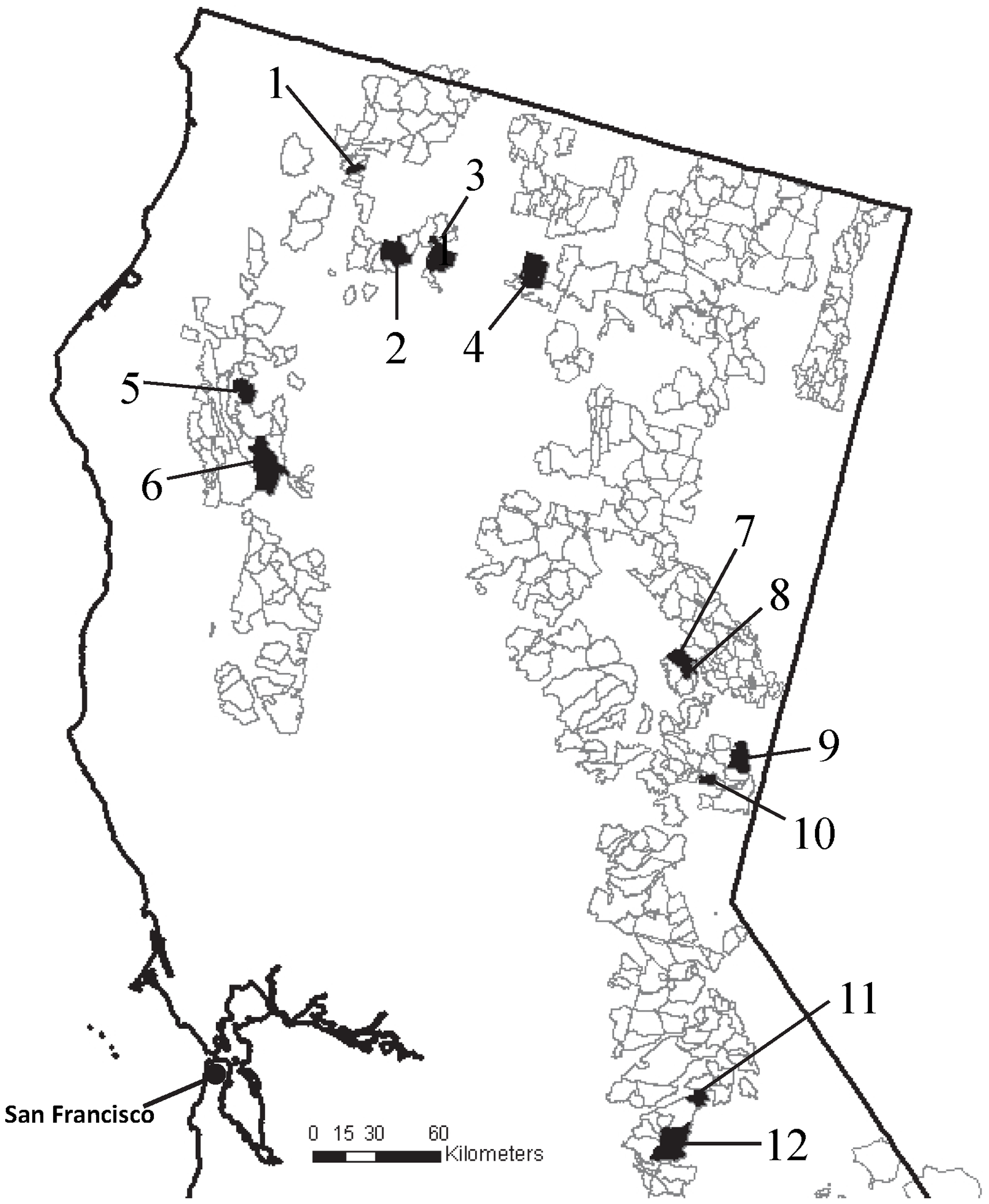Grazing allotments on U.S. Forest Service (USFS) lands provide summer forage for cattle, surface water for public recreations and consumption, and critical aquatic habitat. There is substantial concern that public lands cattle grazing degrades water quality, threatening human and ecological health. Given the importance of clean water on multiple-use landscapes, additional research is required to document water quality conditions, and to examine water quality conditions across resource use activities and environmental conditions.
Objectives
- Quantify fecal coliform, E. coli, total nitrogen, nitrate, ammonium, total phosphorus, and soluble-reactive phosphorus concentrations in surface waters.
- Compare results to a) regulatory benchmarks, b) recommended benchmarks for eutrophication concerns, and c) estimates of nutrient background concentrations.
- Examine relationships between water quality, environmental conditions, cattle grazing, and recreation.


The 12 U.S. Forest Service grazing allotments (shaded polygons) in northern California enrolled in the cross-sectional longitudinal study of stream water quality between June and November 2011
Methods
In collaboration with multiple stakeholder groups, we conducted a cross sectional survey of water quality conditions associated with cattle grazing and recreation on 12 USFS public lands grazing allotments in northern California. We collected a total of 743 water samples from 155 stream collection sites. We sampled each stream collection site monthly during the study period (Jun 1 - Nov 9, 2011). Stream conditions were noted at the time of sampling. Parameters measured were fecal coliform, E. coli, total nitrogen, nitrate, ammonium, total phosphorus, and soluble-reactive phosphorus concentrations.
 Key Results and Conclusions
Key Results and Conclusions
Nutrient concentrations observed were at least one order of magnitude below levels of ecological concern, and were similar to USEPA estimates for background water quality conditions in the region. We found that all but the most restrictive fecal indicator bacteria water quality benchmarks were broadly met. The USEPA has stated - citing the best available science - that E. coli are better indicators of fecal contamination than FC FIB-based standards and therefore provide a more accurate assessment of water quality conditions and human health risks. Throughout the study period, the USEPA recommended E. coli benchmarks of 190 and 235 cfu 100/ml were met at over 83% of sites. These results suggest cattle grazing, recreation, and clean water can be compatible goals across these national forest lands.
Related publication: Roche et al. 2013. Water quality conditions associated with cattle grazing and recreation on national forest lands. PLoS ONE 8(6): e68127. Read more.
Acknowledgements
We thank Anne Yost, Barry Hill, staff from the Klamath, Shasta-Trinity, Plumas, Tahoe, and Stanislaus National Forests, Tom Lushinsky, Mark Noyes, Natalie Wegner, Donna Dutra, D.J. Eastburn, Xien Wang, and Kristin Oles for project support; and UC Cooperative Extension and USFS District Rangers and Forest Supervisors who provided lab space.
